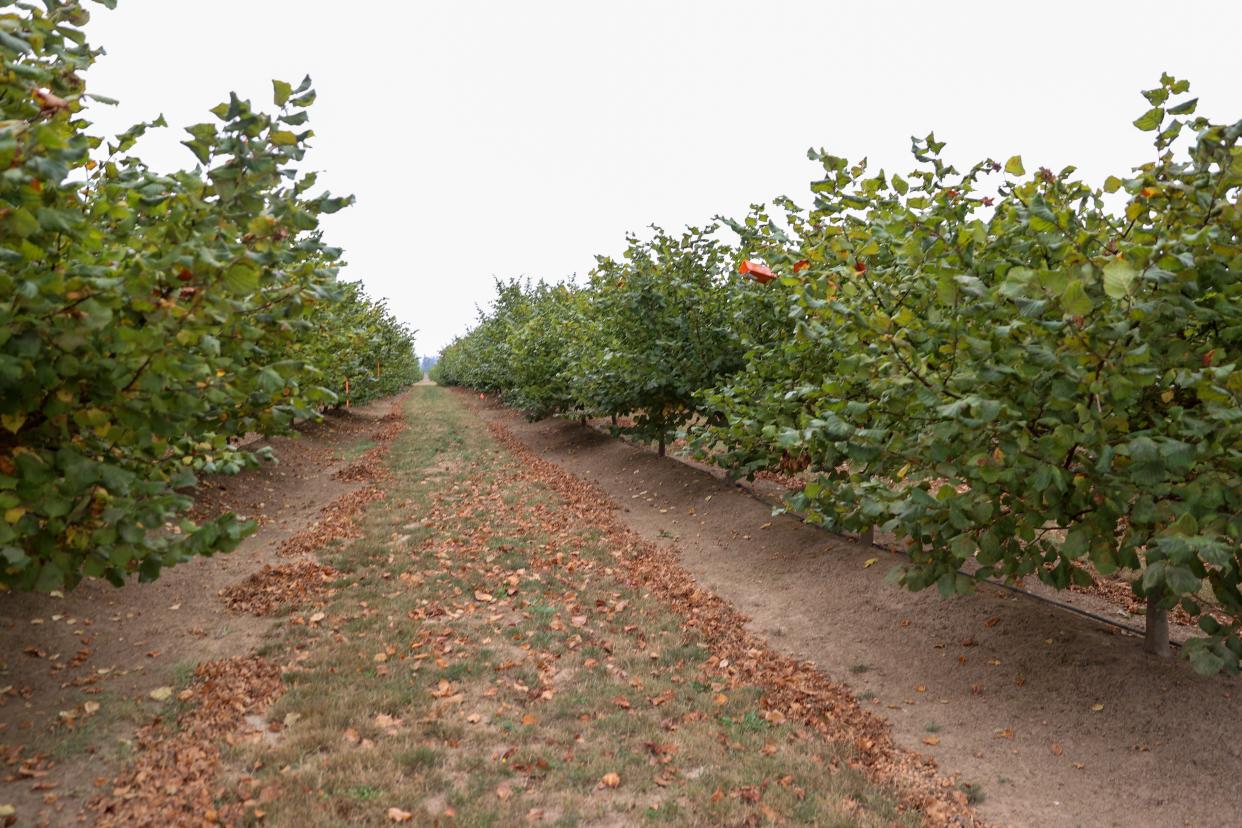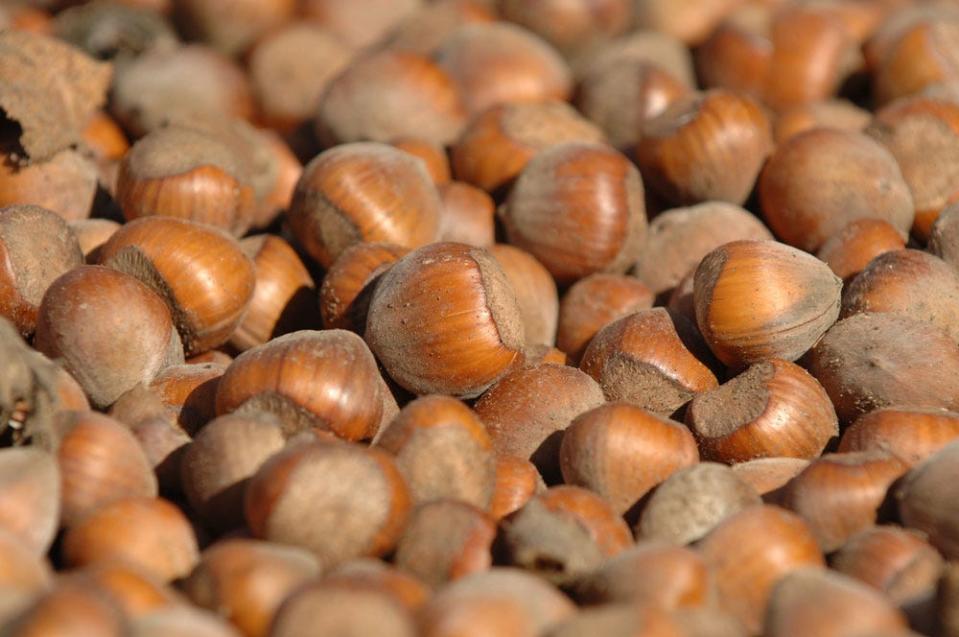Oregon's state nut has two different names. Why is that?

This is part of a weekly series answering "Why is that?" questions about Salem and the Mid-Valley.
The question: Why does the Oregon state nut have two names? We have the answer. But first, a little history.
The background: Filbert trees and the name filbert are said to have been introduced into Oregon by early French settlers in what we know as the French Prairie area, north of Salem.
Some believe the name comes from a French saint. The feast of St. Philibert coincided with prime harvest time in Europe. Some historians speculate it refers to the husked shell that resembles a beard. The German word for "full beard" is vollbart, which sounds like filbert.
The nut was considered a sacred food in ancient Chinese culture. It has been used worldwide as a medicine and a tonic, with its benefits described this way by a Greek physician more than 1,800 years ago:
"It cures chronic coughing if pounded filbert is eaten with honey. Cooked filbert mixed with black pepper cures the cold. If the ointment produced by mashing burnt filbert shells in suet is smeared on the head where hair does not grow due to normal baldness or to some disease, hair will come again."

In more modern times, the nut has become a customary part of Christmas traditions and holiday foods, especially cookies, pastries and chocolate confections.
Turkey produces more than 70% of the world's filberts or hazelnuts. Oregon is responsible for just 6-7% but a staggering 99% of the crop in the United States. The state's climate and soil conditions are ideal for its growing needs.
Salem figured prominently during the emergence of the industry and was labeled "the filbert center of the United States" in a 1919 article of The Oregon Statesman.
With rapid growth came the need for industry standards and research. The Filbert Marketing Board was established in 1949. The Oregon Filbert Commission was created by legislative action in 1951 under the Department of Agriculture.
Both changed their names in the 1980s, and are housed today in the Oregon Hazelnut Industry Office in Wilsonville.
We turned to that office for insight on the filbert vs. hazelnut debate.
Why does Oregon's state nut have two names?
Statesman Journal archives show the nuts were almost exclusively called filberts in these parts until the 1980s.
The first mention of a shift to using the term hazelnut published on the newspaper's food page in 1975. A recipe suggested substituting chopped filberts, "now being marketed under the name hazelnuts."
The following year, the Capital Journal reported the commission would use the name hazelnuts for the kernel trade on the East Coast. At the same time, he expected growers and buyers of in-shell nuts to keep calling them filberts.
Oregon processors started using hazelnuts interchangeably with filberts on packaging. The shift continued as growers and the marketing board planned for expansion into Europe and the demand for exports increased.
More: National Toy Hall of Fame started in Salem but left in 2002. Why is that?
Hazelnut was the name used in Europe, not filbert. As the story goes, some customers overseas were so befuddled they sent "filbert" shipments back.
In 1981, the commission decided to emphasize the name hazelnuts and eventually changed its name to the Oregon Hazelnut Commission.
It made sense to market hazelnuts rather than filberts because more of the world recognized the nuts by that name.
The hazelnut became Oregon's official state nut in 1989, but the name filbert continued to be used by some locals.
Both are correct and used interchangeably.
One long-time filbert farmer recently explained it like this: "We grow filberts and sell hazelnuts."
Oh, by the way
Oregon has about 93,000 acres of trees, which are unique because they bloom and pollinate in the middle of the winter when other trees are hibernating.
Not to complicate things, but these popular nuts actually have more than just two names.
The British call a specific variety cobnuts.
Indigenous people in the Pacific Northwest, whose ancestors used the trees as a food source and for basketry and arrow shafts, use the term Tukwila. Washington State and Woodburn have areas known as Tukwila, which translates into "land of the hazelnut."
The Tukwila community in Woodburn once was a filbert or hazelnut orchard, whichever you prefer.
Capi Lynn is a senior reporter for the Statesman Journal. Email your "Why is that" questions to her at clynn@statesmanjournal.com.
This article originally appeared on Salem Statesman Journal: Why does Oregon's state nut have two different names?

